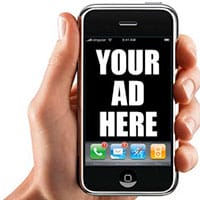Many businesses, big and small, have found the recent rise in ad blocking extremely annoying and worrisome because of the heavy impact on their marketing campaigns that rely substantially on online advertising. Businesses that have a substantial audience of millennials recently witnessed that their ability to reach and communicate with the consumers has been severely impaired. The main reason for their failure to lure customers is the ad blockers installed on the devices of consumers which they use to browse the net. Not only is the marketers’ ability to generate leads and convert them to sales affected but also they lose the opportunity to get valuable data and feedback from prospective customers. Sustained inability to interest and engage with customers online can prove to be lethal for business growth and profitability.
Even though online interactivity with customers is a marketing goldmine, there has been a severe backlash from customers who find the online advertising to be extremely intrusive and spoiling their user experience of browsing the web. This behavioral reaction is something very akin to what marketers continue to face with television advertising.
Ad Blockers Explained
 Ad blockers, also known as content blockers, are software tools that can be installed by users onto their devices to prevent advertisements from being displayed on the websites they are browsing. The tools are typically add-ons to the browsers and are available for all the popular ones such as Chrome, Firefox, Safari, Opera, and Internet explorer or its latest avatar, Edge. While there are innumerable ad blockers available, AdBlock Plus has emerged as the most popular with the plug-in installation base running to 300 million plus.
Ad blockers, also known as content blockers, are software tools that can be installed by users onto their devices to prevent advertisements from being displayed on the websites they are browsing. The tools are typically add-ons to the browsers and are available for all the popular ones such as Chrome, Firefox, Safari, Opera, and Internet explorer or its latest avatar, Edge. While there are innumerable ad blockers available, AdBlock Plus has emerged as the most popular with the plug-in installation base running to 300 million plus.
These ad-blocker applications work in different ways but with the same objective of blocking ads – either the entire ad is blocked, or an empty space is displayed where the ad would have been. Users can install the ad blocker plug-in on the browser they are using and click to turn it on to block all type of online advertisements – banners, pop-ups, Facebook sidebar advertisements, as well as ads on Google search. While most users leave the ad blocker on by default, they can configure it also to only block ads on specified domains or turn it off altogether.
Why the Sudden Buzz Regarding Ad Blocking
 Even though the technology and tools for ad blocking have been around since 2010, the reason why advertisers are freaking out about them in recent times is because studies have revealed that the use of ad blockers by web surfers is becoming increasingly common. The number of people using ad blocking technology was estimated to be in the region of 198 million up stratospherically from 21 million in 2009. Publishers have estimated their loss to be around $22 billion in 2015 and this is expected to rise to 41 billion plus in 2016, reflecting the enormity of the problem for the online business community.
Even though the technology and tools for ad blocking have been around since 2010, the reason why advertisers are freaking out about them in recent times is because studies have revealed that the use of ad blockers by web surfers is becoming increasingly common. The number of people using ad blocking technology was estimated to be in the region of 198 million up stratospherically from 21 million in 2009. Publishers have estimated their loss to be around $22 billion in 2015 and this is expected to rise to 41 billion plus in 2016, reflecting the enormity of the problem for the online business community.
Loathed by marketers who saw their attempts to reach their target audiences foiled even before customers had an opportunity of seeing them, the e-commerce world went into a tizzy when Apple announced that iOS 9, their latest operating system for mobiles had capabilities for blocking advertisements. Originally, restricted to desktop computers, a number of ad blockers for Apple portable devices like iPhone and iPad were launched in Apple’s App Store, much to the annoyance of online marketers.
Since then, a ruling by a German court against advertisers and in favor of ad blocking had the online advertising and social media marketing community running for cover. Even though Android users outnumber iOS users, marketers fear that it is just a matter of time that ad-blocking would be enabled on Android too and significantly affect Internet advertising revenues.
SEO to Rescue Advertisers

Just because an ad blocker is on, marketers need not really despair and think that they would be forever cut off from their customers. With the ad blocking in force, the customer has no distractions in the form of PPC advertisements and thus has a clean SERP full of organic results. Given this scenario, this is the perfect time for advertisers to do some really effective selling through SEO. Some tips on getting your SEO right to take advantage of the situation:
1. Quality Content
 Now that users are not distracted with advertising, you can get their full attention on reading content that is rich, useful, informative, and relevant to the requirement of the user. It is essential that you keep the content pertinent to that your website is all about otherwise it would be a wasted effort. For instance, even very good content on baking can be totally irrelevant on a site dedicated to sporting goods.
Now that users are not distracted with advertising, you can get their full attention on reading content that is rich, useful, informative, and relevant to the requirement of the user. It is essential that you keep the content pertinent to that your website is all about otherwise it would be a wasted effort. For instance, even very good content on baking can be totally irrelevant on a site dedicated to sporting goods.
If you are stuck on what to include in your content, then you could try out sites like AnswerthePublic.com where you could just feed in the topic and get to see the questions that people most frequently ask as well as the most used prepositions and a full alphabetical list of the questions. Keyword.io is another very helpful site that can give you an idea of the most popular long-tailed searches on any subject. You can use these tools to get an idea of what people generally look for in the area of your specialization so that you can answer them with great content.
2. Title Tags and Meta Descriptions
 After the content has been written, you need to make sure that the title tag of each page and the Meta description is relevant to the intended focus of the web page. The title tag should be composed in such a way that it gives a very accurate indication of what the page deals with; you can use the main keyword to guide you and place it just in front of the title that should be crisp and limited to a maximum of 65 characters. The title tag is read by the search engines and plays a crucial part in deciding how high the page will be ranked.
After the content has been written, you need to make sure that the title tag of each page and the Meta description is relevant to the intended focus of the web page. The title tag should be composed in such a way that it gives a very accurate indication of what the page deals with; you can use the main keyword to guide you and place it just in front of the title that should be crisp and limited to a maximum of 65 characters. The title tag is read by the search engines and plays a crucial part in deciding how high the page will be ranked.
While the Meta description has no role in the rankings, it is equally important simply because by reading it users will decide if they want to click on it and read the page. Ideally, the description should expand on what has been included in the title tag. You can use Meta descriptions to highlight certain services that can encourage clicks. Limit the descriptions to a maximum of 155 characters.
3. Social Sharing
 The utility of making your web page shareable on the social media is not only to facilitate content distribution but also to indicate ranking signals to Google. Ensure that you include social sharing button on each and every page of your site with content that you want to share across the gamut of social media platforms.
The utility of making your web page shareable on the social media is not only to facilitate content distribution but also to indicate ranking signals to Google. Ensure that you include social sharing button on each and every page of your site with content that you want to share across the gamut of social media platforms.
Conclusion

Much of the work for effective SEO will have been accomplished if you take care of the quality of the content, address the composition of title tags and Meta descriptions, and make social sharing easy. Other on-page issues that you should pay attention to include page loading speed, alt text for all images to facilitate search, accurate transcripts for video content and rich snippets that provide users a summary of what the page contains and how it is relevant to the search.
This article is written by Neha Aruja. She is a freelance content writer at Ginger Domain and has written many good and informative articles on different categories such as Technology, health, fashion, beauty, education, career, travel etc. She is very responsible towards her job and loves to share her knowledge and experience with her friends and colleagues.



